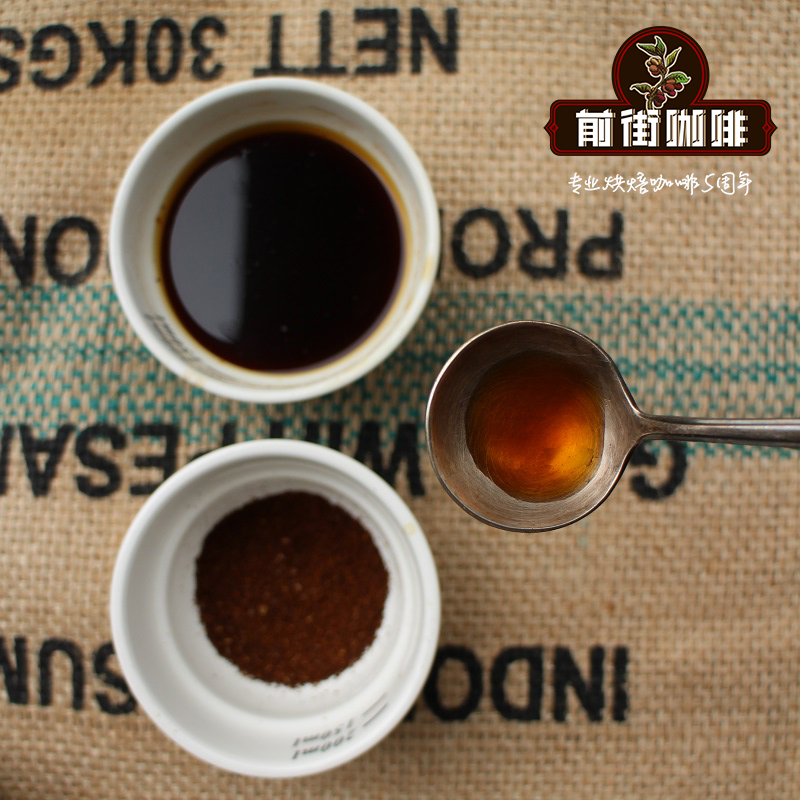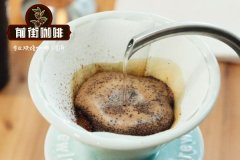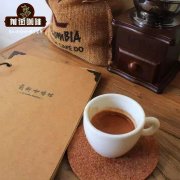Brazilian California Manor Obata Obata Coffee handmade course _ is Obata good?

Professional coffee knowledge exchange more coffee bean information please follow the coffee workshop (Wechat official account cafe_style)
In 1729, Brazilian coffee was introduced into Brazil from the French colony of French Guiana, which began its unstoppable development.
Brazilian coffee has good soil conditions, but it is mostly in plain areas, without the high altitude and hilly terrain of many coffee producing areas, so it tastes relatively mild and comfortable, and for many coffee consumers, Brazilian coffee is more acceptable.
In addition to Brazilian coffee, which is easily accepted, it firmly occupies the first place in the world in terms of output. Brazilian coffee is an essential blend for many espresso. At the same time, the half-sun and half-water treatment of Brazilian coffee has firmly raised the quality and flavor of the coffee to a higher level.
At present, Brazilian coffee is more focused on boutique coffee. For example, in today's article, California Manor in Parana, Brazil, adopts the method of water washing and fermentation control. After washing, wet fermentation is purified by L7 special yeast in a concrete container, thus showing a unique cream taste and nutty finish, while a balance of sour and bitter, as well as a light fruit acid flavor. Make you feel a chic cup of Brazilian coffee.
Brazilian Coffee California Manor Coffee beans Information
Origin: Norte Pioneiro do Paran á, Brazil
Altitude: 1100 m
Bean seed: Obata (a hybrid from Peru and Southeast Asia)
Processing method: washing method
Acidity: low alcohol: medium
Caption: aromas of caramel and chocolate with a nutty finish
Qianjie cooking parameters are suggested:
How to make Brazilian coffee [California Manor Obata]?
Front Street Coffee hand reference: weigh 15g of [California Manor Obata] coffee powder, pour into a grinder for medium grinding, the finished particles are slightly thicker than salt, we use BG bean grinder to scale 6A (standard sieve pass rate of 50%), water temperature 88 degrees, kono/kalita filter cup extraction, recommended powder water ratio around 1:14.
The hot water in the hand flushing pot draws a circle clockwise with the center of the filter cup. Start the time when brewing, brew the coffee to 30g in 15 seconds, then stop the water injection, and when the time is up to 1 minute, the second water injection. The second water injection is the same as before, draw a circle clockwise with the center of the filter cup, and the water flow should not rush to the place where the coffee powder is connected with the filter paper, so as not to produce channel effect.
Coffee powder to the outermost circle to set aside a circle, and then another circle to the middle, 2 minutes 10 seconds, to the coffee to 210g, brewing coffee is finished.
| Japanese Ice hand Chong [Obata, California Manor]
Front Street Coffee Ice hand [California Manor Obata] reference:
Brazilian Coffee [Obata, California Manor], medium and deep roasted, BG bean grinder scale 5R (standard sieve pass rate 60%)
20 grams of powder, 150 grams of ice, 150 grams of hot water. The water temperature is 88 ℃ higher than the recommended normal hand flush, then 1 ℃ higher, the normal grinding small Fuji 3.5 scale, the ice hand flushing is slightly smaller than half a grid-small Fuji 3 scale, the recommended powder (water + ice) ratio is 1:15.
The amount of steaming water is 40 grams and the steaming time is 30 seconds.
Water injection by stages, 60 grams of water in the first section and 40 grams of water in the second section. Use a thin but high water injection column and stir hard to make the coffee powder fully tumble, but be careful that the water level is not too high and do not rush to the edge of the filter paper.
The whole extraction time is about two and a half minutes (close to the normal extraction time of 20 grams of powder).
END
Important Notice :
前街咖啡 FrontStreet Coffee has moved to new addredd:
FrontStreet Coffee Address: 315,Donghua East Road,GuangZhou
Tel:020 38364473
- Prev

Brazilian Tango Manor how to grind coarse beans in half-day hand-made coffee _ how to play Brazilian hand-made coffee
Professional coffee knowledge exchange more coffee bean information please follow the coffee workshop (Wechat official account cafe_style) Brazilian coffee COE international competition: half-sun treatment group international third tango estate (Sitio Tanque) farmer: Merce Jordan Araujo Silva international judges flavor description: 89.47BlackBerry, lime, chocolate, caramel, Cabernet grape
- Next

How to adjust the scale of bourbon coffee in Mandy Kaila Villa, Brazil? what if the coffee is cold?
Professional coffee knowledge exchange more coffee bean information please follow Coffee Workshop (Wechat official account cafe_style) the Mantiqueira Mandy Kella region, located in the southern state of Minas, Brazil, is made up of 25 cities and has been famous for producing high quality Brazilian coffee for more than 100 years. In 2011, Mandy Kella area received geographical indication protection label certification. Lighthouse
Related
- Detailed explanation of Jadeite planting Land in Panamanian Jadeite Manor introduction to the grading system of Jadeite competitive bidding, Red bid, Green bid and Rose Summer
- Story of Coffee planting in Brenka region of Costa Rica Stonehenge Manor anaerobic heavy honey treatment of flavor mouth
- What's on the barrel of Blue Mountain Coffee beans?
- Can American coffee also pull flowers? How to use hot American style to pull out a good-looking pattern?
- Can you make a cold extract with coffee beans? What is the right proportion for cold-extracted coffee formula?
- Indonesian PWN Gold Mandrine Coffee Origin Features Flavor How to Chong? Mandolin coffee is American.
- A brief introduction to the flavor characteristics of Brazilian yellow bourbon coffee beans
- What is the effect of different water quality on the flavor of cold-extracted coffee? What kind of water is best for brewing coffee?
- Why do you think of Rose Summer whenever you mention Panamanian coffee?
- Introduction to the characteristics of authentic blue mountain coffee bean producing areas? What is the CIB Coffee Authority in Jamaica?

